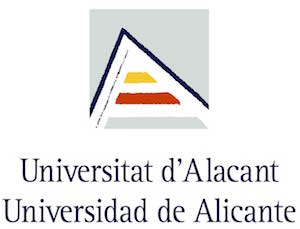TECHNOLOGY DESCRIPTION
The research group Electrocatalysis and Polymer Electrochemistry of the University of Alicante has developed a new technology in order to regenerate activated carbons. The main advantages of this technology are: it can be used in situ and at room temperature and pressure. This technology can be used in the following industrial sectors: pharmaceutical, waste recycling, drinking water, etc. The research group is looking for companies interested in this technology for licensing agreement or technical cooperation.
The economics and feasibility of the adsorption technology on industrial scale largely depends on the reactivation and reuse of the spent activated carbon. The ideal activated carbon regeneration process involves desorption of the pollutants concentrated in the activated carbon without any modification of the initial properties of the carbon material.
Spent activated carbons are conventionally regenerated using thermal, physicochemical or biological processes; all of these processes are complex, costly and have high energy demand.
In this sense, the implementation of electroadsorption technology permits the possibility of inverting the polarization of the potential producing desorption of the contaminant and the regeneration of the activated carbon in the same system without being necessary transport activated carbon saturated. Then, the electrochemical regeneration method is an alternative technology due to its unique features such as it can be conveniently operated in situ at room temperature and pressure, with low energy consumption and with short time requirements.
BENEFITS
MAIN ADVANTAGES OF THE TECHNOLOGY
• Allows regeneration of activated carbon in the same place where it is being used (in-situ regeneration), avoiding removal and transport activated carbon.
• The equipment used is simple (requires no additional handling or transport of chemicals), and provides a very economical process and easy control.
• It works at room temperature and atmospheric pressure, unlike the heat treatment, which uses temperatures between 600-1000 °C, and oxidizing or inert gases.
• The treatment can be stopped in seconds, controlling the regeneration process at different time scales.
• The regeneration efficiency is very high (85-90%).
• The energy consumption is lower than in thermal regeneration. For example, electrochemical regeneration of activated carbon saturated with phenol has an efficiency of 85%, takes place between 2-3 hours and consumes between 0.20-1.80 kWh/kg respect thermal regeneration, which consumes between 220-250 kWh/kg to obtain a similar efficiency.
• The textural properties of the original material are slightly modified.
• It enables not only activated carbon regeneration, but also to enhance the performance of adsorption process increasing the adsorption capacity of the porous material and the rate of adsorption.
INNOVATIVE ASPECTS
• Electrochemical technology enhances performance in many aspects of currently technologies (thermal regeneration), as already described above. It is characterized by a high efficiency, sustainability and more economical than conventional technologies.
• It is therefore a real promising alternative that offers a great business opportunity in the growing market of activated carbon regeneration.
LIMITATIONS
N.A.
APPLICATIONS
• MEDICAL/HEALTH RELATED:
- Other Medical/Health Related.
• INDUSTRIAL PRODUCTS:
- Chemicals and Materials.
- Pollution and Recycling Related.
• OTHER:
- Utilities and Related Firms.
Readiness Level (TRL)
 Patent Grading Report |
Patent Grading ReportThe Grading Patents Report evaluates and grades US patents Sample Buy from Wisdomain |
STATUS
Current status
PCT Application
AVAILABILITY
Available for
Licensing
INVENTOR / TEAM
Morallón Nuñez, Emilia Cazorla Amorós, Diego






